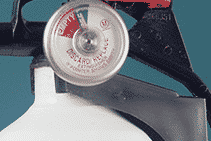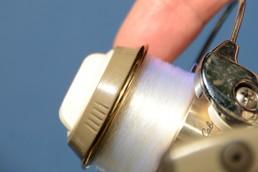Organization is Not a Four-letter Word
SHARE THIS POST
“I have one word for you—plastics.”
This quote from The Graduate in the ’60s, and the book The Cat in the Hat by Dr. Seuss has changed my life forever. I would dig for hours to find a necessary item when I could have been fishing or hunting or whatever. I once tried cardboard boxes to organize things, but soon abandoned that method after dealing with water-soaked boxes, mouse nests and bottom breakouts. Today, through the wonder of plastic tubes, I have everything stored away where it won’t get damaged, where I can find items for next time I need them, assuming that I remember to put it away when I am done.
When you’re outdoors and you are done with whatever item you were using you just pitch it back onto the nearest pile of stuff you used last week or last month—paleontologists would be able to describe exactly what I have used by digging through my piles and unearthing items. This is very bad on several levels: First, it reduces the amount of time you spend in the field because you are searching for some item for hours instead of minutes. This in turn raises your frustration level and lowers your enjoyment level. Second, it can be harder to keep equipment in good condition. Some things probably get more wear and tear drifting down through a pile than when they’re actually used. Third, it’s hard on your pocketbook. You may have to buy new equipment because it broke during its time in storage or you couldn’t find it and decided to just buy a second one or a third one.
To get started you will need the following items:
1. Large plastic tubs.
It helps if the tubs are all the same design and from the same manufacturer because they are usually designed to stack on top of each other, which saves building shelves. Since these are not going to be used for transporting you don’t have to buy the highest quality tub. I like the 18-gallon tubs that usually go on sale around the holidays.
2. Some sort of zip-sealing plastic bags for smaller items.
3. Plastic document protectors.
These should be taped on the front of each tub and hold the correct contents listed. This way as the contents change it’s easy to change the list.
Are you enjoying this post?
You can be among the first to get the latest info on where to go, what to use and how to use it!
4. A three-ring binder.
This last item may be overkill, but I use them to hold the master list, organized by activity. The master list gives a description of every item that you have including its condition, serial number, purchase date/price and any other pertinent information. If you have a computer you will probably transfer the list to a filing program for easy retrieval in the future. A filing program also makes it easy to change information and re-organize items, cross-reference things and gives you an easy inventory for insurance purposes.
After you have these items, put one big tub out for each major activity. For me, that would be deer hunting, turkey hunting, fishing, canoeing, crossover, etc. The “crossover” tub is for items that you use in all activities not for items that you can’t decide how they are used—rangefinder, compass, first-aid kit, etc.
Now, put it all altogether. Put on some music, get yourself a drink and dig in. Pick up an item. If it is in good condition, put it carefully into the appropriate tub. If it is not, go and fix it or clean it then and there. This prolongs the organization process, but in the end I know that all my stored equipment is in working order. As I put it away I’ll make an entry in the master list. And so it goes. List and organize everything item by item until all those unsightly piles are put away into nice orderly tubs. You might also want to consider making a “garage sale” pile. I have packrat tendencies, but if I haven’t used something for four or five years or worse and I don’t know how to use it, it then can become someone else’s treasure. I’ll store my clothing and footwear in tubs as well. I’ve found that it just saves me time, effort and space to have everything together.
Make sure you remove batteries from any equipment too. I store the piece of equipment and its necessary batteries together in some type of container or bag. Leaky batteries are pretty much a thing of the past, but dead ones aren’t. By storing them “separate,” but “together” means I have to put the batteries in each time I use the item. This is a way of making sure I check that the item is functioning before I go afield.
Once you have all your equipment sorted you need to make a simple list for each tub. I learned from my cardboard box days not to write directly on a container. When you change an item you have to cross out the word and soon all you have is an unreadable mess. With the document protectors, all you need to do is change the crossed out the word and when the list gets too messy you can make a new one. For smaller tubs, I make a list and attach it with clear packing tape, again, so that I can change it if necessary.
And while you are at all this organizing, you might as well make up a few checklists. You can make these by hand, but this is where the magic of a good computer-filing program helps. You can cross-reference all your items to make up specific lists of items for each activity. How many times have you gone somewhere (like bowhunting) and realized that you left a very important item (arrows) in your basement?
The key now is to keep everything that you’ve organized, well, organized. And, keep it clean for its next use. It takes some work, but the best way is to clean all your gear as soon as you get home. My tendency is to leave it in a pile telling myself that I’ll get to it tomorrow, but tomorrow never comes. Getting in the habit of cleaning and storing at the end of the activity and the day it was used means things don’t get as easily broken or lost and I’m ready to go without the stress of spending hours putting everything together at the last minute.
All of this organizational, cross-referencing list-making stuff may seem a little over the top. However, anything is better than the older “Mt. Everest” method. A good storage and filing system is a pain at the start, but once you get it up and running, it takes little time to maintain it and then you have lots more time to enjoy the outdoors.
MWO
SHARE THIS POST
Did you enjoy this post?
You can be among the first to get the latest info on where to go, what to use and how to use it!
Doug Thalacker
Doug Thalacker has a Masters of Environment Science from UW-SP and taught high school environmental science and earth science. He has outdoor/wilderness training through Outward Bound and American Red Cross. He has a lifetime of enjoying any activity that involves fields, woods or waters.


